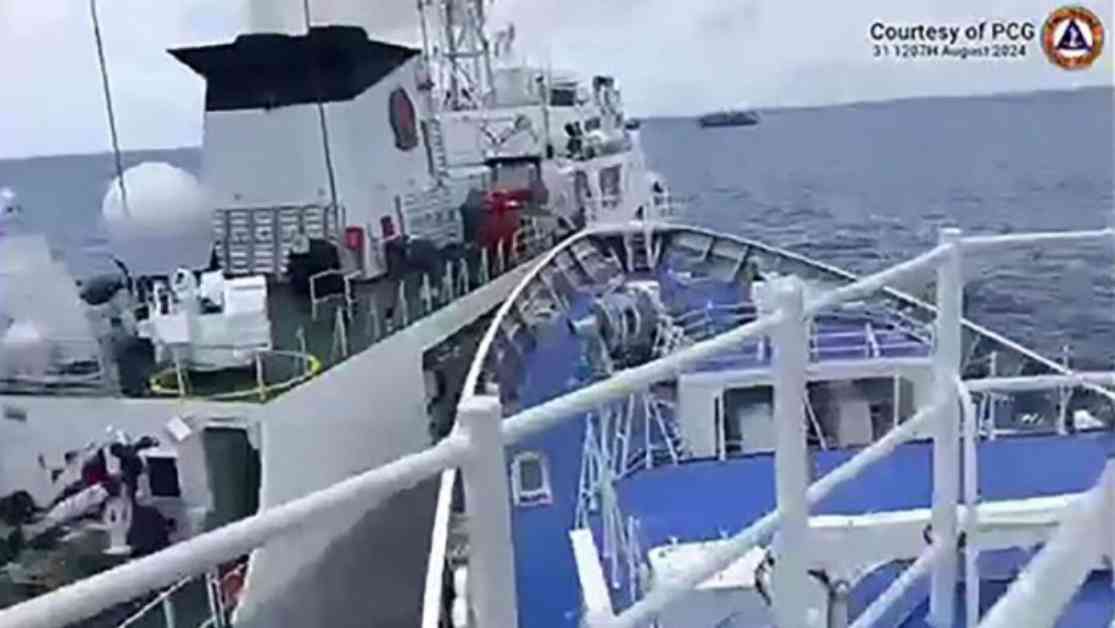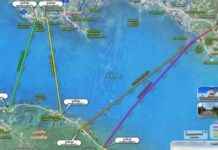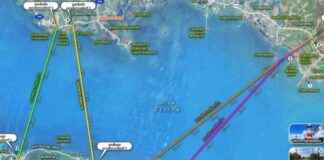Title: Escalating Tensions in the South China Sea: Chinese and Philippine Ships Collide in Disputed Waters
On a seemingly routine day in the South China Sea, tensions between China and the Philippines reached a boiling point as coast guard ships from both nations collided near the Sabina Shoal. The incident, captured in a frame grab from handout video footage released by the Philippine Coast Guard, has once again highlighted the ongoing territorial disputes in the region. Both countries have pointed fingers at each other, with accusations flying back and forth as they try to assert their claims over the contested waters.
Chinese Claims and Accusations
Liu Dejun, a spokesperson for the China Coast Guard, wasted no time in placing blame on the Philippine Coast Guard vessel 9701 for the collision. He accused the Philippine ship of engaging in reckless behavior and intentionally causing the incident near Xianbin Reef. In a statement posted on the Coast Guard’s website, Liu emphasized the unprofessional and dangerous manner in which the Philippine vessel allegedly operated, leading to the collision.
Philippine Response and Reactions
On the other side of the dispute, Commodore Jay Tarriela of the Philippine Coast Guard vehemently denied the Chinese accusations. In a live briefing streamed on social media, Tarriela asserted that it was a China Coast Guard ship that “directly and intentionally rammed” the Philippine vessel. He emphasized that the Philippine Coast Guard did not provoke the Chinese ship and highlighted the damage sustained by their boat as a result of the collision. The conflicting narratives from both sides only serve to deepen the rift between the two nations.
The collision between the Chinese and Philippine coast guard ships is just the latest in a series of incidents that have fueled tensions in the South China Sea. China’s increasingly aggressive stance towards Philippine vessels entering what it claims as its own waters has raised concerns among international observers. Despite a previous international tribunal ruling in favor of Manila’s claims, China continues to assert its dominance in the disputed region, leading to heightened confrontations at sea.
International Response and Mediation Efforts
In response to the escalating tensions, both China and the Philippines have attempted to establish a “provisional arrangement” to ease the strain in certain parts of the contested waters. However, repeated incidents like the recent collision only serve to undermine these efforts. The international community has been closely monitoring the situation, with calls for peaceful resolutions to the territorial disputes in the South China Sea growing louder.
As the Philippines considers broadening the scope of the provisional arrangement with China, the delicate balance of power in the region hangs in the balance. The need for open communication, mutual respect, and adherence to international law has never been more critical in resolving the longstanding disputes in the South China Sea. Failure to find common ground could lead to further escalations and potential conflicts that would have far-reaching consequences for the entire region.
In conclusion, the collision between Chinese and Philippine coast guard ships in the South China Sea serves as a stark reminder of the complex geopolitical dynamics at play in the region. As both nations continue to assert their claims over the disputed waters, the need for diplomacy, dialogue, and adherence to international law becomes increasingly urgent. Only through peaceful negotiations and respect for each other’s sovereignty can a lasting solution be found to the ongoing tensions in the South China Sea.




















